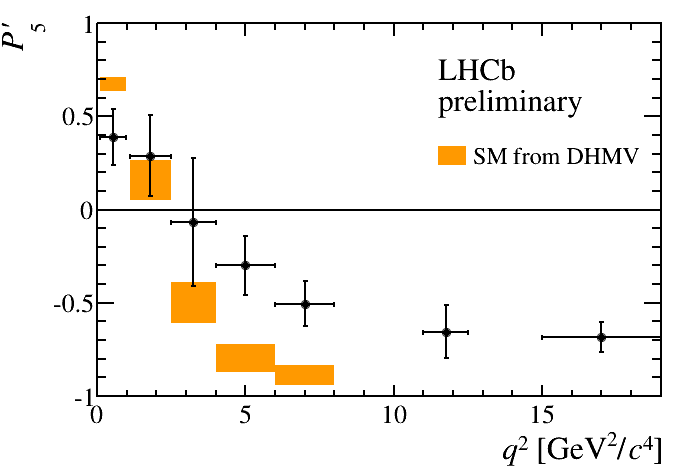Navigation auf uzh.ch
Navigation auf uzh.ch
Mesons are particles that are composed of a quark and an anti-quark (a short introduction to the particles of the Standard Model can be found here). In B mesons, one of the quarks is a b quark. Rare decays of B mesons are strongly suppressed in the Standard Model and are therefore a promising place to look for possible effects from "New Physics".
A prime example is the decay B0 → K*0μμ, which occurs with a probability of about one in a million. If we collect many of these decays and measure the angles between the decay products, we obtain distributions that are determined by eight independent quantities (observables). For some of these observables, in particular the one known as P'5, our measurements show a discrepancy with respect to Standard Model predictions.
The Figure below shows P'5 as a function of the squared invariant mass of the two muons emitted in the decay. Standard Model predictions are indicated by the yellow bands, while the points with error bars show the LHCb measurements. There is a striking discrepancy between predictions and measurements, which can be interpreted as a sign for "New Physics" beyond the Standard Model. The most popular new physics interpretation is the existence of a heavy Z' vector boson, not present in the Standard Model.

However, as discussed in this paper, a larger than assumed breaking of QCD factorization could also explain this effect within the Standard Model and without a need to invoke "New Physics". Our group was the first to measure this discrepancy and we are now deeply involved in analyses to better understand its origins.